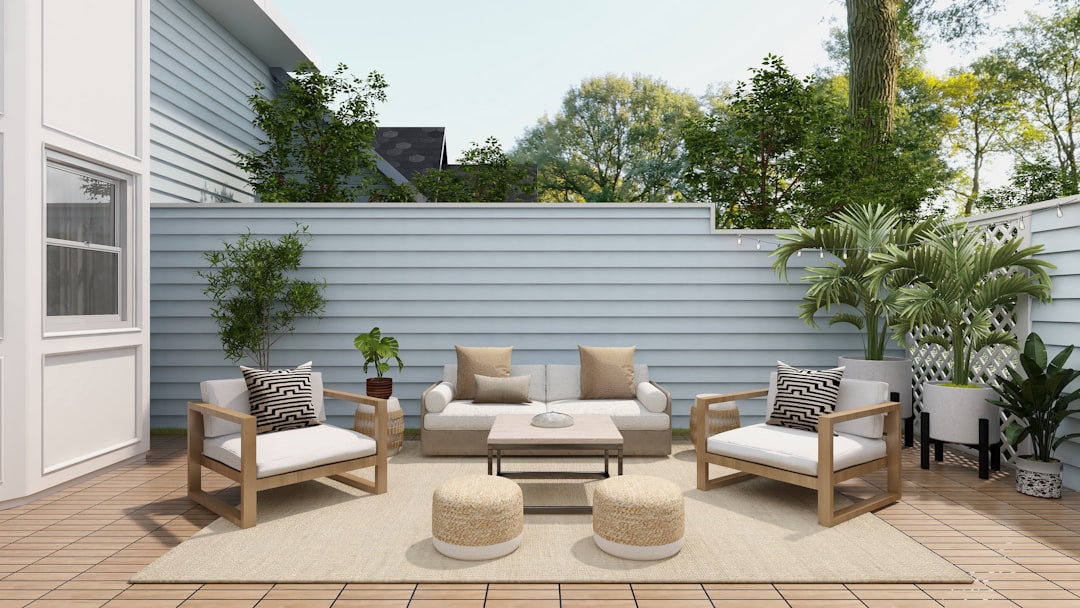A well-designed patio can become an outdoor extension of your home—a place to relax, entertain, and enjoy nature. With container gardening, you can transform any patio into a lush, inviting outdoor living room, no matter how big or small the space.
In this guide, we’ll explore how to use plants to create a cozy, stylish, and functional patio garden, along with tips on choosing the right containers, plants, and layout.
Why Patio Container Gardening?
🌿 Adds Natural Beauty – Create a green oasis with vibrant flowers, lush foliage, and edible plants.
🪑 Defines Spaces – Use planters to create cozy seating areas, dining spots, or private retreats.
🌞 Provides Shade & Privacy – Tall plants, trellises, and container trees offer natural screening.
🌱 Flexible & Portable – Easily rearrange containers to change the look and function of your patio.
🛋️ Blends Indoor & Outdoor Living – Make your patio feel like an extension of your home.
Step 1: Define Your Outdoor Living Zones
Before choosing plants, decide how you want to use your patio space.
🏡 Cozy Lounge Area – Arrange comfortable seating with potted greenery around the edges.
🍽️ Outdoor Dining Space – Add a table and surround it with fragrant herbs or flowers.
🪴 Vertical Green Wall – Use a trellis or hanging planters to create a living backdrop.
🌿 Relaxing Zen Garden – Incorporate minimalist planters with bamboo, ferns, and a water feature.
🌞 Sun-Lover’s Paradise – Grow drought-tolerant plants like succulents and ornamental grasses.
💡 Tip: Use large pots and planter boxes to define different areas and make the space feel structured.
Step 2: Choose the Right Containers
✔ Large Planters – Great for small trees, shrubs, or large flowering plants.
✔ Hanging Baskets – Save space and add layers of greenery.
✔ Tall Pots & Urns – Ideal for framing doorways or walkways.
✔ Trough or Rectangular Planters – Work well for privacy screens along patios or fences.
✔ Raised Beds or Tiered Planters – Perfect for growing herbs, veggies, or a mix of flowers.
🌿 Tip: Choose weather-resistant materials (ceramic, fiberglass, or treated wood) for longevity.
Step 3: Selecting the Best Plants for a Patio Garden
🌳 Statement Plants (Container Trees & Shrubs)
Tall plants help create structure and shade in a patio garden.
✔ Dwarf Trees: Olive tree, lemon tree, Japanese maple, fig tree.
✔ Evergreen Shrubs: Boxwood, dwarf arborvitae, gardenia.
🌸 Flowering Plants for Color & Fragrance
✔ Sun-Loving Blooms: Geraniums, petunias, lavender, marigolds.
✔ Shade-Friendly Flowers: Impatiens, begonias, fuchsias.
✔ Fragrant Choices: Jasmine, roses, lilacs.
🌿 Herbs & Edible Plants (For Function & Beauty)
✔ Aromatic Herbs: Basil, rosemary, thyme, mint.
✔ Edible Plants: Cherry tomatoes, peppers, lettuce, strawberries.
🌾 Ornamental Grasses & Vines (For Texture & Privacy)
✔ Tall Grasses: Bamboo, fountain grass, pampas grass.
✔ Climbing Vines: Clematis, ivy, passionflower, bougainvillea.
🌿 Tip: Mix thrillers (tall plants), fillers (bushy plants), and spillers (trailing plants) for a lush, balanced look.
Step 4: Designing a Beautiful Patio Garden Layout
📍 Frame Seating Areas – Place large containers at corners or behind furniture to create a natural enclosure.
📍 Use Symmetry – Match pots on either side of a doorway or pathway for a polished look.
📍 Layer Heights – Place tall plants in back, mid-sized fillers in the middle, and trailing spillers in front.
📍 Create a Focal Point – Use a statement plant, water feature, or sculpture to anchor your design.
📍 Incorporate Lighting – String lights, lanterns, or solar-powered spotlights enhance the ambiance.
🌿 Tip: Arrange pots in groups of three or five for a more natural and visually appealing display.
Step 5: Caring for Your Patio Container Garden
💦 Watering
-
Check soil moisture daily, especially in summer.
-
Use self-watering pots or a drip irrigation system for low-maintenance care.
🌱 Fertilizing
-
Slow-release fertilizer keeps plants nourished over time.
-
Liquid feed every 2–3 weeks for blooming plants.
🍂 Pruning & Deadheading
-
Trim herbs and flowers regularly to encourage new growth.
-
Remove dead leaves and blooms to keep plants healthy.
🛡️ Pest & Weather Protection
-
Watch for pests like aphids and treat them with organic insecticidal soap.
-
Move sensitive plants indoors or cover them during extreme weather.
🌿 Tip: In winter, wrap pots in burlap or use insulating covers to protect roots from frost.
Bonus: Patio Garden Styling Ideas
🛋️ Modern & Minimalist – Use sleek, monochrome planters with sculptural plants like succulents or snake plants.
🌿 Lush Jungle Retreat – Mix tropical plants like elephant ears, monstera, and palms.
🍷 Mediterranean Vibes – Pair terracotta pots with olive trees, lavender, and rosemary.
🌸 Cottage Garden Charm – Fill rustic wooden planters with roses, daisies, and trailing ivy.
Final Thoughts
Patio container gardening is a simple yet impactful way to bring life, color, and functionality to your outdoor space. Whether you want a cozy retreat, a vibrant flower garden, or a practical herb and vegetable setup, containers offer endless possibilities to personalize your patio.
🌿 What’s your dream patio garden style? Share your ideas in the comments below!

Comments
No comments yet. Be the first to comment!
You must be logged in to comment. Login